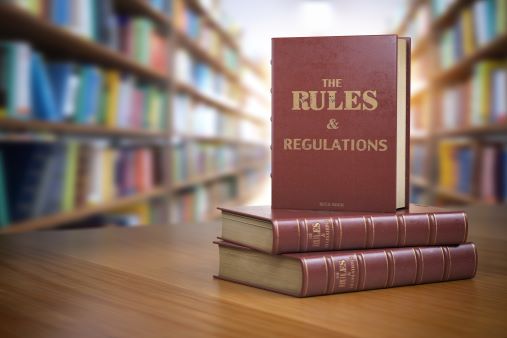On Jan. 10, 2020, the U.S. Federal Trade Commission and the Department of Justice’s Antitrust Division (the Agencies) released Draft Vertical Merger Guidelines, which apply to combinations of firms or assets that operate at different levels of the same supply chain.
If ultimately adopted, the draft guidelines would replace the Non-Horizontal Merger Guidelines issued by the DOJ in 1984. Although the guidelines represent the first update to the Agencies’ non-horizontal merger guidelines in more than 35 years, they do not fundamentally alter the Agencies’ current analytical approach to vertical mergers, which has evolved substantially over that time.
In this way, the proposed guidelines are intended to formalize the Agencies’ current approach to vertical mergers, increase “transparency of the analytical process underlying the Agencies’ enforcement decisions,” and assist “the courts in developing an appropriate framework for interpreting and applying antitrust laws in the vertical merger context.”
The key takeaways from the draft guidelines include:
- Relevant Market and Related Product Thresholds: The objective of vertical merger enforcement actions is to determine whether the proposed merger will substantially lessen competition in one or more relevant markets. The draft guidelines confirm that the Agencies will apply the methodology set forth in the Horizontal Merger Guidelines to define relevant markets for vertical mergers. In addition, when a potential competitive concern is identified in a relevant market, the Agencies will also identify one or more “related products,” which are products or services that are supplied by the merged firm, are vertically related to the products and services in the relevant market, and to which access by the merged firm’s rivals affects competition in the relevant market. For example, a related product could be “an input, a means of distribution, or access to a set of customers.”
The draft guidelines identify a 20 percent threshold for analyzing relevant markets and related products. In other words, “[t]he Agencies are unlikely to challenge a vertical merger where the parties to the merger have a share in the relevant market of less than 20 percent, and the related product is used in less than 20 percent of the relevant market.” These thresholds, however, are not “a rigid screen to separate competitively benign mergers from anticompetitive ones.” Rather, the thresholds are simply one analytical tool the Agencies will use, at the outset, to identify whether a vertical merger is likely to raise competitive concerns, noting that mergers with shares below the thresholds can give rise to competitive concerns, and that mergers with shares exceeding the thresholds will not necessarily be presumed to substantially lessen competition.
- Unilateral Effects: Unilateral effects generally refer to the ability of a merged firm, acting alone, to diminish competition in a relevant market. The proposed guidelines address three primary unilateral effects that are of particular concern to the Agencies in vertical merger enforcement actions:
- Foreclosure of rivals – A vertical merger may result in foreclosure of rivals when the merged firm could refuse to supply rivals with related products. For example, if a manufacturer merges with a supplier that provides key component parts to the manufacturer’s rivals, the merged firm may effectively diminish competition with those rivals by denying them access to the key component parts.
- Raising rivals’ costs – A vertical merger may also result in higher costs for rivals when the merged firm is able to charge rivals a higher price for related products or lower service or product quality.
- Gaining access to rivals’ competitively sensitive information – A vertical merger may also result in a merged firm gaining access to sensitive business information about its rivals that was unavailable to it before the merger. For example, if a manufacturer mergers with a supplier that provides key component parts to the manufacturer’s rivals, the merged firm may gain access to the rivals’ sensitive business information, including input costs, purchasing data, and other competitively sensitive information.
Although the draft guidelines expressly address these three unilateral effects, they also clarify that these are not the only unilateral effects the Agencies will consider in a vertical merger enforcement action.
- Coordinated Effects: In addition to the unilateral effects of a proposed vertical merger, the draft guidelines also acknowledge that “a vertical merger may diminish competition by enabling or encouraging post-merger coordinated interaction among firms in the relevant market that harms customers.” For example, a merged firm “could use its power of a product or service in a related product to harm the ability of a non-merging maverick in the relevant market to compete, thereby increasing the likelihood of coordinated interaction among the merged firm and rivals participating in that market.”
The Agencies will consider the evidence set forth in the Horizontal Merger Guidelines to determine whether a market is vulnerable to coordination, and the draft guidelines note they will be more likely to challenge a vertical merger “on the basis of coordinated effects when the relevant market shows signs of vulnerability to coordinated conduct” and there is credible evidence that the proposed merger may enhance that vulnerability.
- Elimination of Double Marginalization and Other Efficiencies: The draft guidelines acknowledge that vertical mergers often “have the potential to create cognizable efficiencies that benefit competition and consumers,” because they “combine complementary economic functions and eliminate contracting frictions.” Accordingly, the Agencies “do not challenge a merger if cognizable efficiencies are of a character and magnitude such that the merger is unlikely to be anticompetitive in any relevant market.”
One of the most prominent efficiencies that is often achieved in a vertical merger is the elimination of double marginalization. Double marginalization occurs when an upstream supplier charges a downstream manufacturer a price exceeding its marginal cost of providing goods to the downstream market, and the downstream manufacturer, in turn, charges an additional mark-up on the products that incorporate the upstream supplier’s goods. In this scenario, the consumer pays a final price that incorporates both markups. When the upstream supplier and the downstream manufacturer merge, the downstream division is able to access the upstream supplier’s goods at marginal cost, which can result in a reduction of the price of the downstream product, or an elimination of double marginalization.
The draft guidelines state that the Agencies “generally rely on the parties to identify and demonstrate whether and how the merger eliminates double marginalization,” and they provide that the Agencies “will not challenge a merger if the net effect of elimination of double marginalization means that the merger is unlikely to be anticompetitive in any relevant market.”
The public comment period for the draft guidelines has been extended to Feb. 26, 2020, and the Agencies have announced joint public workshops regarding the draft guidelines on March 11 and 18, 2020. Accordingly, it is possible that the Agencies will revise the draft guidelines after receiving input from the public. Nevertheless, the release of the draft guidelines and recent enforcement actions related to vertical mergers appear to signal that the Agencies are taking an increased interest in vertical combinations. As such, firms considering vertical mergers should be especially cognizant of antitrust concerns before completing such transactions, and should consider engaging antitrust counsel and economic experts at the outset to, among other things, perform relevant market and related product analyses and identify any potential anticompetitive and procompetitive effects of their proposed transactions.
To learn more, please contact the Barnes & Thornburg attorney with whom you work or the following members of the Antitrust and Competition Law Group: Kendall Millard at 317-231-7461 or kendall.millard@btlaw.com, Paul Olszowka at 312-214-5612 or paul.olszowka@btlaw.com, or Luke Wohlford at 214-258-4106 or luke.wohlford@btlaw.com.
© 2020 Barnes & Thornburg LLP. All Rights Reserved. This page, and all information on it, is proprietary and the property of Barnes & Thornburg LLP. It may not be reproduced, in any form, without the express written consent of Barnes & Thornburg LLP.
This Barnes & Thornburg LLP publication should not be construed as legal advice or legal opinion on any specific facts or circumstances. The contents are intended for general informational purposes only, and you are urged to consult your own lawyer on any specific legal questions you may have concerning your situation.















